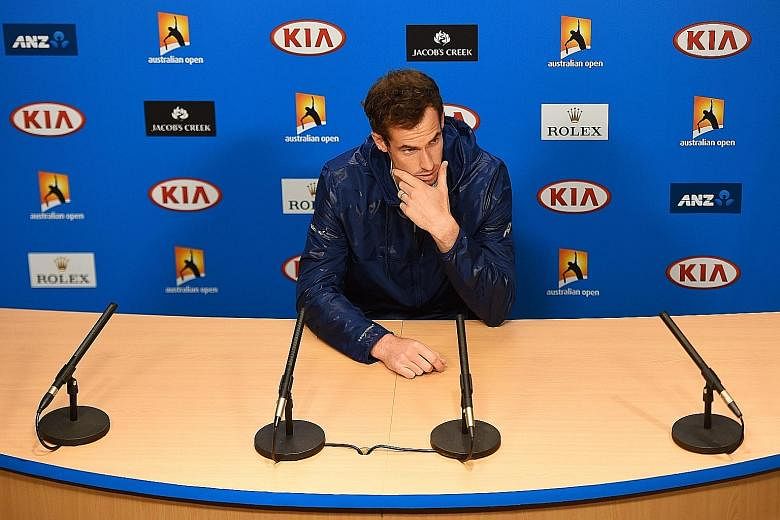MELBOURNE • More players revealed match-fixing approaches yesterday as the Australian Open Grand Slam tournament came under close scrutiny following claims that corruption in tennis is widespread.
Australia's world No. 86 Thanasi Kokkinakis said he had been targeted through social media, while a British former Davis Cup player said he was once offered an envelope stuffed with cash to throw a match.
According to Australian media, police were also on the lookout for suspicious results in the first round of the Australian Open, which is currently under way in Melbourne.
The latest developments come after the BBC and BuzzFeed, citing leaked documents, said 16 players who have reached the top 50 had repeatedly fallen under suspicion without facing action.
"More than half" of the players, who include singles and doubles Grand Slam champions, are at the Australian Open, according to BuzzFeed.
The controversy is just the latest to hit the sports world after allegations of doping cover-ups rocked athletics and football body Fifa was engulfed by a string of corruption scandals. On Monday, Serbian world No. 1 Novak Djokovic detailed a US$200,000 (S$287,000) match-fixing approach earlier in his career involving a tournament in St Petersburg, Russia.
Tennis authorities strongly denied covering up any match-fixing evidence but they are likely to come under increasing pressure to act against what is seen as a clear threat to the sport's integrity.
"If there is corruption in any sport, you know, you want to hear about it," said world No. 2 Andy Murray after beating German Alexander Zverev 6-1, 6-2, 6-3 in his first-round match yesterday.
"As a player, you just want to be made aware of everything that's going on. I think we deserve to know everything that's sort of out there."
In another indication that match-fixers are preying on tennis players, Kokkinakis, 19, told Australia's 3AW that he had been approached through Facebook.
"Just these random (people) from nowhere saying, 'I'll pay you this much money to tank a game.' I try and block it and focus on what you need to do," he said.
Separately, Britain's Arvind Parmar said he turned down a cash-stuffed envelope which was offered to him an hour before a match at a second-tier Challenger event in the Netherlands in 2004.
"I was offered an envelope full of euros to lose in two sets," Parmar, 37, told The Times. "I was approached by a random guy as I was coming off the practice courts. He showed me the money and said that I had to lose in two sets.
"It was a substantial amount of money - tens of thousands, way more than I would have earned from winning the tournament and more than most players at that level would make in a year."
Experts have said tennis is ripe for corruption due to the ease of fixing, as well as the large disparity between the multi-million dollar earnings of top players and the lower rungs of professionals.
According to research conducted on behalf of the governing body, the International Tennis Federation, almost 45 per cent of the 13,736 players at all professional levels of the sport earned nothing from it in 2013. Only about 10 per cent covered their costs.
The research also found that players ranked in the top 50, on average, earn more than US$1 million a year on both the men's and women's tours. Those from 51-100 earn in excess of US$200,000, while 101-250 average around US$85,000. For those players ranked from 251-500 the earnings drop away to just US$16,000 a year.
The average cost just from food, travel, accommodation and equipment to play professional tennis in 2013 was US$38,800 for men and US$40,180 for women, the research found.
AGENCE FRANCE-PRESSE, REUTERS

